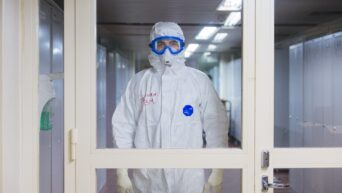In a shocking scientific development, a team of scientists at the Kindai University in Japan have found a way to bring frozen woolly mammoth cells from 28,000 years ago back to life.
The cells were taken from a well-preserved frozen woolly mammoth nicknamed ‘Yuka,’ who was found in the Siberian permafrost in 2011. This doesn’t mean that we can soon see woolly mammoths up and about, though. According to the report published in a scientific journal, the preserved group of cells sustained enough damage from the elements in its long years of sleep, giving it varying levels of DNA damage. The cells merely showed “signs of biological activities”, which is a good start, but not good enough to create fully-formed woolly mammoths in the near future.
“We have also learned that damage to cells was very profound. We are yet to see even cell divisions.” Kei Miyamoto, one of the scientists who worked on the cells, explains. “I have to say we are very far from recreating a mammoth.”
Miyamoto remains to be optimistic about this new development, however. “This suggests that, despite the years that have passed, cell activity can still happen and parts of it can be recreated,” Miyamoto says. “Until now many studies have focused on analyzing fossil DNA and not whether they still function.”
Some scientists are also hoping to revive the cells further via gene editing, specifically the controversial CRISPR. If the next experiments are successful, this could be the beginning of efforts to bring extinct species back to life.
































